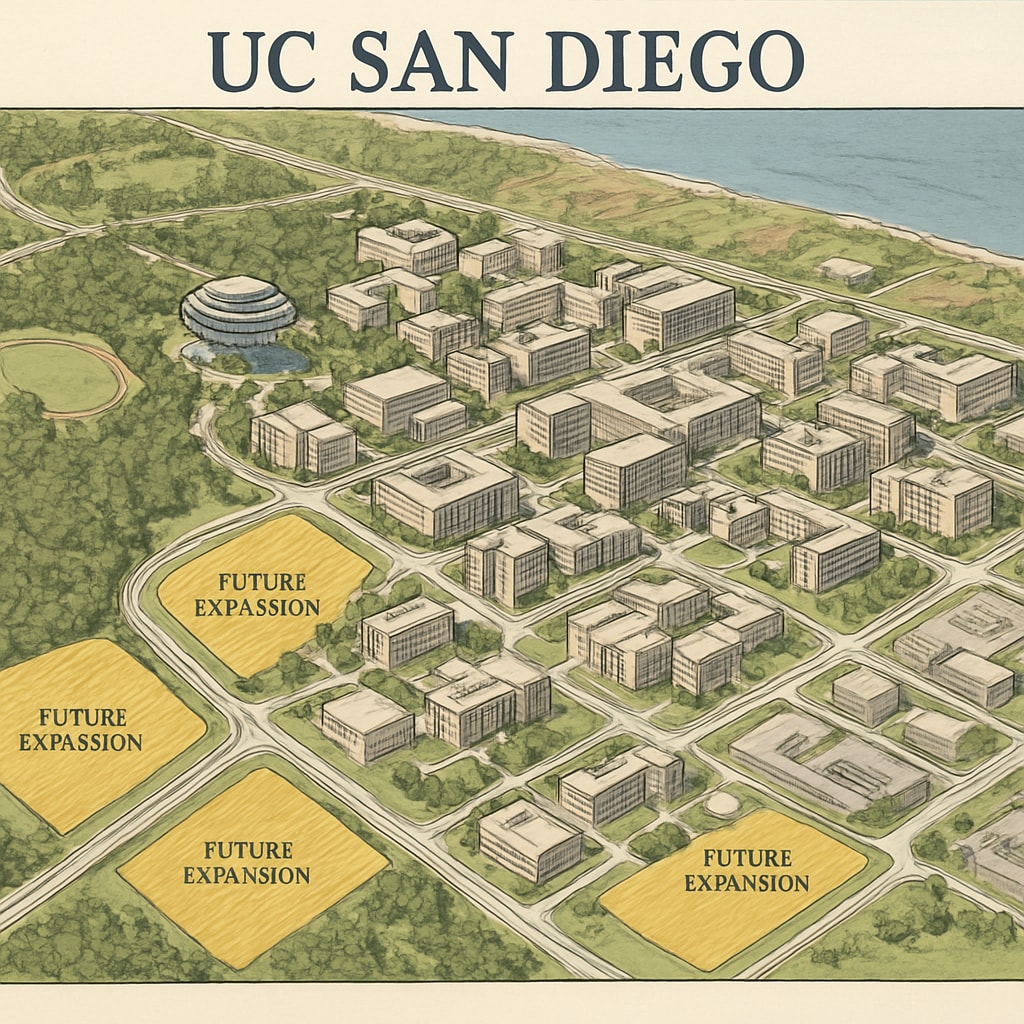Recently, UC San Diego announced a monumental expansion plan that will increase its student population to a staggering 56,000 by 2040. This ambitious initiative, approved by the University of California Board of Regents, has far-reaching implications for the university’s growth, the broader higher education landscape, and K-12 education systems across the region. The UC San Diego expansion plan is not just a story of institutional growth but an indicator of how interconnected higher education and primary education systems truly are.
The Vision Behind UC San Diego’s Expansion
UC San Diego’s decision to expand its student body aligns with California’s need for more college-educated professionals. The university aims to cater to increasing demand for STEM (Science, Technology, Engineering, and Mathematics) and other emerging fields. This expansion will require significant investments in infrastructure, faculty recruitment, and student services.
According to university officials, the goal is to foster innovation while addressing workforce shortages in critical industries. By 2040, UC San Diego aims to serve as a model for sustainable growth in higher education, ensuring access for a diverse student population.

Ripple Effects on K-12 Education
While the expansion of UC San Diego will directly impact higher education, the ripple effects on K-12 education are equally significant. As the university grows, it will require a pipeline of well-prepared high school graduates. This places additional pressure on local K-12 schools to elevate academic standards and provide better college readiness programs.
Here are some key areas where K-12 education may feel the impact:
- Increased competition: With more students aspiring to attend UC San Diego, high schools may face pressure to enhance their college preparatory curricula.
- STEM emphasis: Schools may prioritize STEM-focused programs to align with the university’s academic offerings.
- Teacher training: Educators will need professional development opportunities to prepare students for the evolving requirements of higher education.

Challenges and Opportunities
The UC San Diego expansion plan also brings challenges and opportunities for stakeholders in the education system. For instance, while increased enrollment can lead to greater access to higher education, it also risks overcrowding and resource strain. Similarly, K-12 schools may struggle to meet the demand for college-ready graduates without additional funding.
However, the opportunities are equally promising. Partnerships between UC San Diego and local schools could lead to innovative programs, such as early college initiatives and dual enrollment opportunities. Moreover, the expansion could stimulate economic growth in the region, benefiting both educational institutions and the community at large.
Looking Ahead
As UC San Diego embarks on this transformative journey, collaboration between higher education and K-12 systems will be crucial. Policymakers, educators, and community leaders must work together to ensure that the benefits of this growth extend beyond the university campus. By addressing potential challenges proactively, the expansion could become a blueprint for sustainable educational development in California and beyond.
In conclusion, UC San Diego’s plan to expand its student body to 56,000 by 2040 is a bold step that will not only redefine the university’s role in higher education but also create a cascading effect on K-12 education systems. The success of this initiative will depend on effective planning and collaboration, ensuring that all stakeholders are prepared to embrace the challenges and opportunities that lie ahead.
Readability guidance: Short paragraphs and lists have been used to summarize key points. Overuse of passive voice and long sentences has been avoided, ensuring readability. Transition words such as “however,” “therefore,” and “for example” are used throughout to maintain flow.


